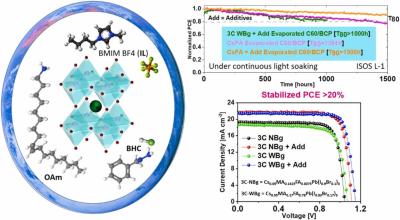Perovskite-Info weekly newsletter
Published: Tue, 02/14/23
The Perovskite-Info newsletter (February 16, 2023)
Cannot read this? View it online here
European project VIPERLAB runs 6th call for perovskite projects
VIPERLAB (Fully Connected Virtual and Physical Perovskite Photovoltaic Lab) is an EU-funded H2020 project that brings together a network of European-based scientists and research organizations engaged in the study and development of Perovskite PV.
The project aims to facilitate faster and more reliable technology evaluation cycles to enable a swift market entry for perovskite-based PV products and a widespread utilization of renewable energy conversion technology.
Researchers achieve 30.3% efficiency with MA-free perovskite-silicon tandem solar cell
Researchers from Australia's Monash University, The Australian National University (ANU), Flinders University, The University of Sydney and Germany's Karlsruhe Institute of Technology have achieved a 30.3% efficiency with a perovskite and silicon tandem solar cell.
The team developed the highly efficient tandem cell, while also enhancing its operational stability. Their work builds on a previous record set by ANU researchers in 2020, and was funded by the Australian Renewable Energy Agency (ARENA).
Researchers examine the thermal instability of perovskite solar cells and offer a way to address the issue
Researchers from Georgia Institute of Technology, Argonne National Laboratory and Brookhaven National Laboratory have demonstrated that halide perovskite solar cells are less stable than previously thought. Their work reveals the thermal instability that happens within the cells’ interface layers, but also offers a path forward towards reliability and efficiency for halide perovskite solar technology.
The research could have significant implications for both academics and industry professionals working with perovskites in photovoltaics.
Researchers use multi-additive strategy to enhance efficiency and stability in inverted perovskite solar cells
Researchers at University of Rome “Tor Vergata”'s CHOSE (Centre for Hybrid and Organic Solar Energy), Greatcell Italy, ISM-CNR and ENEA have studied a standard triple cation perovskite (∼1.58 eV) and wider bandgap perovskite (∼1.63 eV) with intention of finding a common strategy to build a robust device stable over time independently of the perovskite used.
The scientists used a combination of additives inside the perovskite ink: ionic liquid 1-Butyl-3 methylimidazolium tetrafluoroborate (BMIM-BF4), alkylamine ligands oleylamine (OAm) and benzylhydrazine hydrochloride (BHC). The recent work reveals that the combination of these additives helps to improve the efficiency and stability of the entire device, reaching a power conversion efficiency up to 21.3% and over 20% for both types of perovskite and stability beyond 1000 h under continuous light soaking.
Researchers show that perovskite-based thermochromic windows reduce energy load and carbon emission in buildings
Researchers from NREL, University of Wisconsin—Stout and Swift Solar have reported perovskite-based thermochromic windows that reduce energy load and carbon emission in buildings. The team calculated and fabricated a perovskite-based technology with excellent transition temperatures for building energy savings.
The use of thermochromic windows in office buildings improves energy efficiency across all climate zones in the United States by modulating the temperature inside, leading to a massive savings, according to the research effort led by the U.S. Department of Energy’s National Renewable Energy Laboratory (NREL).
KAUST team reports results of one-year outdoor testing of perovskite/silicon tandem solar cells
Scientists from Saudi Arabia’s King Abdullah University of Science and Technology (KAUST) have reported the results of a one-year outdoor test for a tandem perovskite-silicon solar cell they developed in 2020. They have found that the device retained more than 80% of its initial efficiency during the testing period between April 2021 and April 2022.
The team's results are actual outdoor measurement over months and months, rather than testing done in a lab-controlled environment. The team is still conducting tests, aiming to focus on stability and reach at least a two-decade operation goal.
Metalgrass LTD
9 Har Tsin St.
Kfar Sava Hasharon 4430809
ISRAEL
Unsubscribe | Change Subscriber Options






